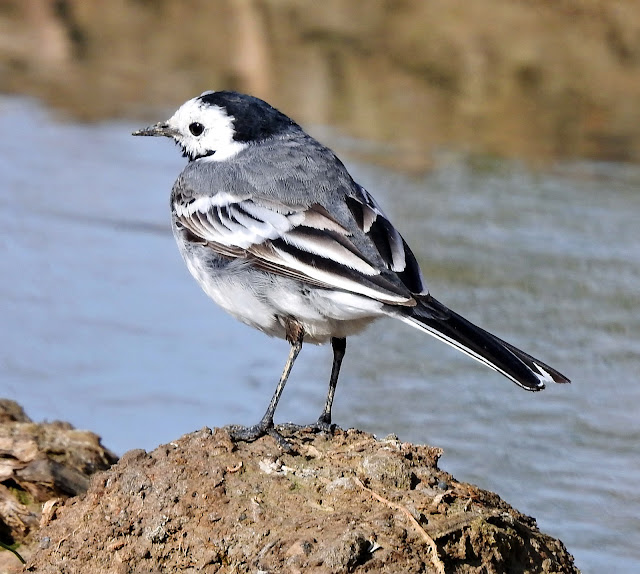The White Wagtail (Motacilla alba) is a small, elegant passerine bird, a member of the family Motacillidae, which includes pipits and longclaws. This slender bird measures between 16.5 to 19 cm in length, with East Asian subspecies reaching up to 21 cm. It is characterized by its long, constantly wagging tail, a behavior that has become synonymous with the genus. Weighing an average of 25 g, the White Wagtail can live up to 12 years in the wild.
Adult White Wagtails exhibit a distinctive plumage with a combination of grey, black, and white. The bird's upper parts are generally grey, with a white face, belly, and breast. Males during the breeding season may show a darker back, and the species is known for its sharp, brisk call and more melodious song during courtship.
The White Wagtail is commonly found in open country, often in close proximity to human habitation and water sources. It shows a preference for bare areas which facilitate the sighting and pursuit of prey. This bird has adapted well to urban environments, utilizing paved areas such as parking lots for foraging.
This species has a vast breeding range across Europe, the Asian Palearctic, parts of North Africa, and has a presence in Alaska. It is a migratory bird, with populations moving to Africa and parts of Asia during the winter. In Great Britain and Ireland, the darker subspecies known as the Pied Wagtail is more prevalent.
The White Wagtail is known for its perpetual tail wagging, a behavior that remains somewhat enigmatic but is thought to be a signal of vigilance to predators. It is a monogamous bird that defends its breeding territory with determination.
The call of the White Wagtail is a sharp "chisick," softer than that of the Pied Wagtail. Its song is more structured and is used by males to attract females rather than to mark territory.
White Wagtails are monogamous breeders, with both sexes contributing to nest building. The nest is often placed in crevices or holes near water or in human-made structures. The species lays three to eight cream-colored, speckled eggs, which both parents incubate. Chicks fledge after 12 to 15 days and continue to be fed for a week thereafter.
The diet of the White Wagtail primarily consists of insects and small invertebrates, including beetles, dragonflies, flies, and crustaceans. It continues to feed on insects even in winter, unlike many other insectivorous birds in temperate climates.







%2020.jpg)
%2022.jpg)
%2024.jpg)
%2025.jpg)
%2021.jpg)












%2020.jpg)
%2021.jpg)














